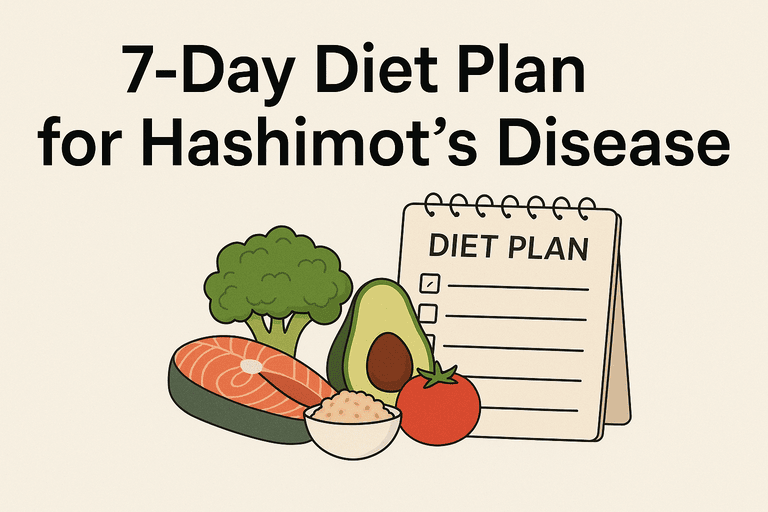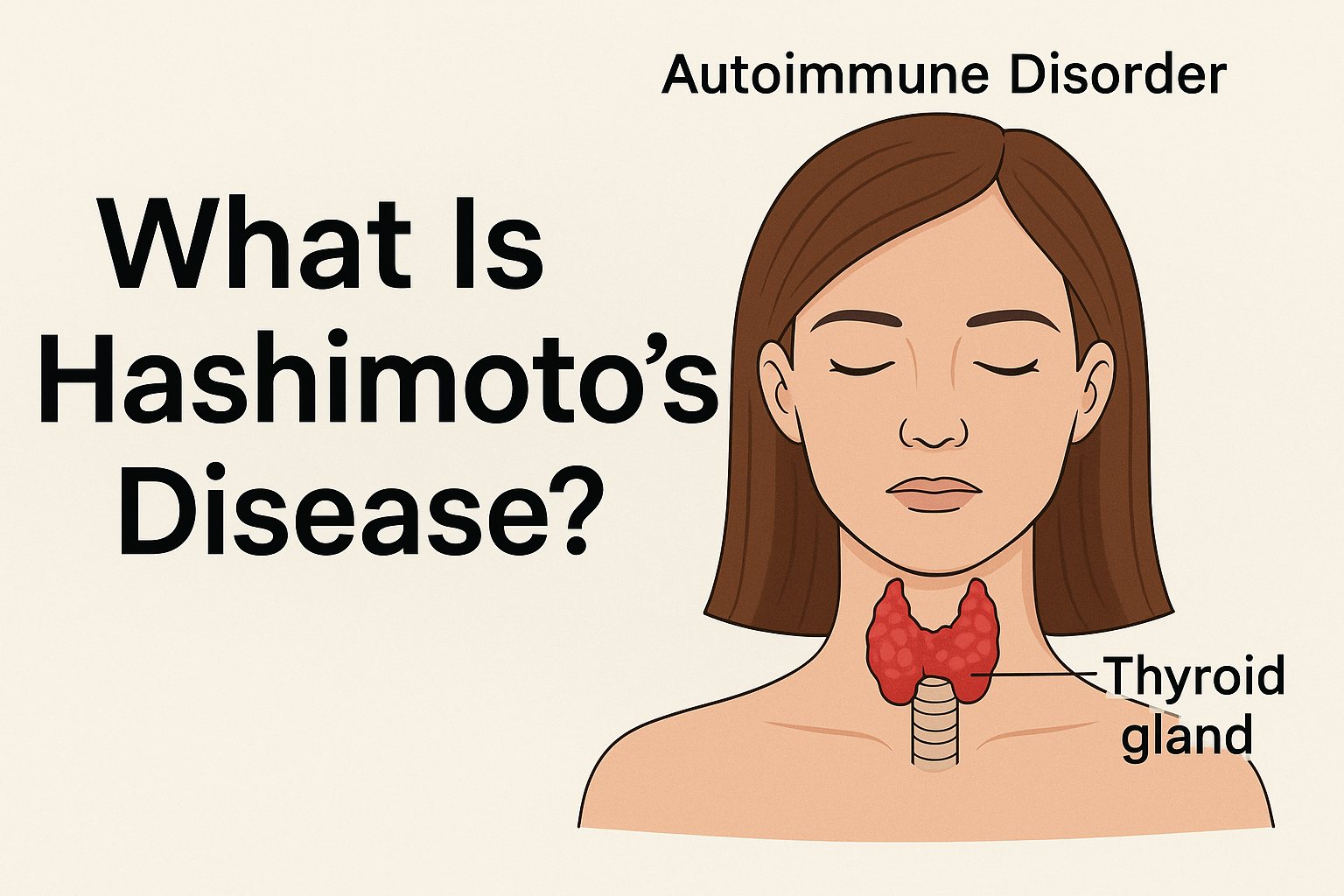Physical Address
304 North Cardinal St.
Dorchester Center, MA 02124
Physical Address
304 North Cardinal St.
Dorchester Center, MA 02124

7-day diet plan for Hashimoto’s disease is one of the most effective ways to support your thyroid health, reduce inflammation, and improve your overall well-being. If you’re living with Hashimoto’s, you likely understand how unpredictable symptoms like fatigue, weight gain, and brain fog can be.
While medication is often essential, what you eat plays a powerful role in how you feel day to day. The right nutrition can help ease symptoms, boost energy, and even support your immune system. In this guide, we’ll walk you through a full week of delicious, nutrient-rich meals tailored specifically to help manage Hashimoto’s disease naturally and sustainably. Whether you’re newly diagnosed or looking for a reset, this meal plan is designed to help you take control of your health one bite at a time.
In this guide, we’ll walk you through a week-long, balanced meal plan tailored specifically for people living with Hashimoto’s. It’s more than just avoiding gluten and dairy; it’s about nourishing your body with foods that promote healing and support your thyroid.

Hashimoto’s disease is an autoimmune condition where the body’s immune system attacks the thyroid gland. This can lead to hypothyroidism (an underactive thyroid), causing symptoms like fatigue, weight gain, depression, sensitivity to cold, and brain fog. Diet plays a vital role in managing these symptoms, alongside medication.
The right diet can help:
Let’s dive into the foods to eat and avoid before we begin the meal plan.

When planning a Hashimoto’s-friendly diet, your meals should include:
Certain foods can increase inflammation or disrupt thyroid function:

Let’s break it down day by day, with breakfast, lunch, dinner, and snacks. All meals are gluten-free, dairy-free, anti-inflammatory, and rich in nutrients that support thyroid health.
Breakfast:
Sweet potato hash with spinach, avocado, and two poached eggs.
Snack:
Handful of Brazil nuts and blueberries.
Lunch:
Grilled chicken breast with quinoa salad (cucumber, cherry tomatoes, olive oil, lemon juice).
Snack:
Carrot sticks with homemade hummus.
Dinner:
Baked salmon with roasted Brussels sprouts and a side of mashed cauliflower.
Breakfast:
Chia pudding with unsweetened almond milk, flaxseeds, and fresh raspberries.
Snack:
Sliced apple with almond butter.
Lunch:
Turkey lettuce wraps with shredded carrots, cucumber, and tahini sauce.
Snack:
Boiled egg with a pinch of sea salt.
Dinner:
Zucchini noodles with ground turkey marinara and a mixed greens salad.
Breakfast:
Green smoothie (spinach, avocado, frozen mango, chia seeds, and coconut milk).
Snack:
Pumpkin seeds and cucumber slices.
Lunch:
Grilled wild-caught tuna with a side of roasted sweet potato and broccoli.
Snack:
Celery with guacamole.
Dinner:
Stuffed bell peppers with quinoa, black beans, onions, and herbs.
Breakfast:
Oats (gluten-free) soaked overnight with coconut milk, cinnamon, and sliced banana.
Snack:
Handful of walnuts and a kiwi.
Lunch:
Spinach and chicken salad with avocado, olive oil, lemon dressing, and sunflower seeds.
Snack:
Zucchini chips or kale chips.
Dinner:
Baked cod with sautéed kale and steamed carrots.
Breakfast:
Scrambled eggs with sautéed spinach, mushrooms, and cherry tomatoes.
Snack:
Pineapple chunks and coconut yogurt (unsweetened, dairy-free).
Lunch:
Quinoa tabbouleh with grilled shrimp and cucumber-tahini dressing.
Snack:
Roasted chickpeas.
Dinner:
Cauliflower rice stir-fry with ground beef, ginger, and mixed vegetables.
Breakfast:
Smoothie bowl with acai, unsweetened almond milk, spinach, and berries, topped with chia seeds.
Snack:
Sliced pear and sunflower seeds.
Lunch:
Grilled chicken quinoa bowl with roasted vegetables and olive oil drizzle.
Snack:
Olives and pickled beets.
Dinner:
Zoodle (zucchini noodles) stir-fry with tofu (organic, in moderation), bok choy, and coconut aminos.
Breakfast:
Almond flour pancakes with sugar-free berry compote and a sprinkle of cinnamon.
Snack:
Green apple with tahini.
Lunch:
Butternut squash soup with grilled turkey slices and arugula salad.
Snack:
Hard-boiled egg and seaweed snacks.
Dinner:
Herb-roasted chicken thighs with asparagus and mashed sweet potatoes.

Here are some practical tips to help you stick to this 7-day diet plan for Hashimoto’s disease and see long-term benefits:
Chop veggies, cook protein, and batch-make snacks to avoid daily stress.
Aim for at least 8 glasses of filtered water per day. Herbal teas like chamomile or ginger are also helpful.
Too much iodine can aggravate Hashimoto’s. Only use iodized salt if recommended by your doctor.
Take care of your gut with fermented foods like kimchi and sauerkraut or talk to your doctor about probiotics.
Keep a journal to log meals, moods, and symptoms. It can help identify food sensitivities or trigger patterns.

Yes. This diet complements thyroid medications. Just make sure to take your meds on an empty stomach and avoid food for 30-60 minutes afterward.
Not always. Many people with Hashimoto’s are also sensitive to dairy, soy, or eggs. An elimination approach may help pinpoint personal triggers.
Not necessarily. Gluten-free whole grains like quinoa and brown rice are usually well tolerated.
Absolutely. It’s a whole-food-based, nutrient-rich approach that can be followed long-term, with variation to keep it interesting.
Following a 7-day diet plan for Hashimoto’s disease can provide real relief and help you take control of your health. By focusing on anti-inflammatory, nutrient-dense foods and eliminating common triggers, you may notice improved energy, digestion, mood, and even weight.
Remember, food is powerful medicine especially when it’s chosen with care. Combine this meal plan with your prescribed medical treatment and a healthy lifestyle, and you’ll be well on your way to managing Hashimoto’s disease naturally and effectively.